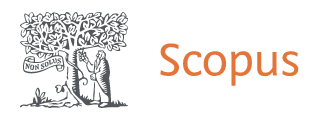Development of Student Worksheet Assisted by Phyphox Application on Harmonic Vibration Material
DOI:
https://doi.org/10.35895/rf.v5i1.19Keywords:
Phyphox, Harmonic oscillation, Student worksheetAbstract
This study aims to develop student worksheets assisted by the Phyphox application on the material of Harmonic Oscillations in Springs. This study uses a 4D model consisting of 4 main stages: define, design, develop, and disseminate. The results of the designed worksheets have been reviewed by 2 physics education experts, and are considered suitable for use to support classroom learning. The trial was conducted in one class consisting of 31 students. The results of the trial showed an increase in learning outcomes after students participated in learning with the worksheets assisted by Phyphox that was developed. In addition, students also gave a good response to the use of worksheets assisted by Phyphox. Thus, the worksheets that were developed have the potential to be used in physics learning widely.
References
Coramik, M., & Ürek, H. (2021). Calculation of Kinetic Friction Coefficient with Phyphox, Tracker and Algodoo. Physics Education, 56(6), 065019.
Hake, R. R. (1998). Interactive-engagement versus Traditional Methods: A Six-thousand-student Survey of Mechanics Test Data for Introductory Physics Courses. American Journal of Physics, 66(1), 64–74
Hofstein, A. (2017). The Role of Laboratory in Science Teaching and Learning. In Science Education (pp. 355-368). Brill.
Ilmi, Y. F., Susila, A. B., & Iswanto, B. H. (2021). Using Accelerometer Smartphone Sensor and Phyphox for Friction Experiment in High School. In Journal of Physics: Conference Series (Vol. 2019, No. 1, p. 012008). IOP Publishing.
Kousloglou, M., Molohidis, A., Nikolopoulou, K., & Hatzikraniotis, E. (2022). Mobile Inquiry-based Science Learning (m-IBSL): Employment of the Phyphox Application for an Experimental Study of Friction. Teaching Science, 68(2), 14-18.
Lincoln, J. (2024). Biot–Savart Law with a Smartphone: Phyphox App. The Physics Teacher, 62(1), 72-73.
Moeed, A., & Moeed, A. (2015). Science Laboratory Learning Environment, and Learning. Science Investigation: Student Views about Learning, Motivation and Assessment, 11-23.
Noprinda & Soleh. (2019). Development of Student Worksheets (LKPD) Based on Higher Order Thinking Skills (HOTS). Indonesian Journal of Science and Mathematics Education, 2(2), 168–176.
Orhan, T. Y., & Sahin, N. (2018). The Impact of Innovative Teaching Approaches on Biotechnology Knowledge and Laboratory Experiences of Science Teachers. Education Sciences, 8(4), 213.
Pierratos, T., & Polatoglou, H. M. (2020). Utilizing the Phyphox App for Measuring Kinematics Variables with a Smartphone. Physics Education, 55(2), 025019.
Pratidhina, E., Rosana, D., & Kuswanto, H. (2024). Designing Modeling-based Physics Online Learning Assisted with Home-lab-kit. KnE Social Sciences, 692-702.
Pusch, A., Ubben, M. S., Laumann, D., Heinicke, S., & Heusler, S. (2021). Real-time Data Acquisition using Arduino and Phyphox: Measuring the Electrical Power of Solar Panels in Contexts of Exposure to Light in Physics Classroom. Physics Education, 56(4), 045001.
Staacks, S., Dorsel, D., Hütz, S., Stallmach, F., Splith, T., Heinke, H., & Stampfer, C. (2022). Collaborative Smartphone Experiments for Large Audiences with Phyphox. European Journal of Physics, 43(5), 055702.
Suoth, S., Silangen, P., & Rende, J. (2023). Physics Learning Based on Phyphox Practicum Using the Guided Inquiry Learning Model. Charm Science: Journal of Physics Education, 4(1), 26-30.
Supeno, Kurnianingrum, A. M., & Cahyani, M. U. (2017). Evidence-Based Reasoning Ability in Physics Learning. Journal of Science Learning and Education, 2(1), 64-78.
Toma, R. B., & Greca, I. M. (2018). The Effect of Integrative STEM Instruction on Elementary Students’ Attitudes toward Science. Eurasia Journal of Mathematics, Science and Technology Education, 14(4), 1383-1395.







